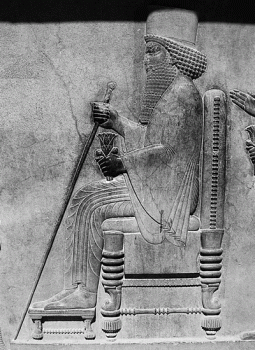American Journal of Archaeology | The Journal of the Archaeological Institute of America
You are here
Technologies of Memory in Early Sasanian Iran: Achaemenid Sites and Sasanian Identity
October 2010 (114.4)
Technologies of Memory in Early Sasanian Iran: Achaemenid Sites and Sasanian Identity
This article analyzes the techniques by which the kings of the early Sasanian dynasty engaged the past and shaped the experience of future generations. I concentrate on the innovations and legacy of the first two kings of kings of the dynasty, Ardashir I (r. 224–239/40 C.E.) and his son Shapur I (239/40–270/2 C.E.). These sovereigns fashioned a new and politically useful vision of the past to establish their dynasty’s primacy in Persia and the wider Iranian world, eclipsing their Seleucid, Fratarakid, and Arsacid predecessors. I identify and examine the artistic, architectural, and ritual means by which the early Sasanians conformed the built and natural environment of their homeland to their grand new vision of the past. I argue that the Achaemenid patrimony of the province of Pars played an important role in these efforts, serving as inspirations and anchors for the Sasanians’ new creations.
Technologies of Memory in Early Sasanian Iran: Achaemenid Sites and Sasanian Identity
By Matthew P. Canepa
American Journal of Archaeology Vol. 114, No. 4 (October 2010), pp. 563–596
DOI: 10.3764/aja.114.4.563
© 2010 Archaeological Institute of America


